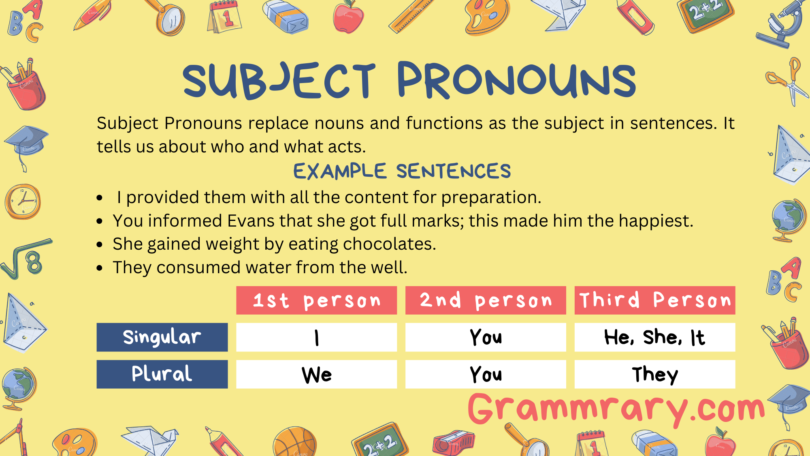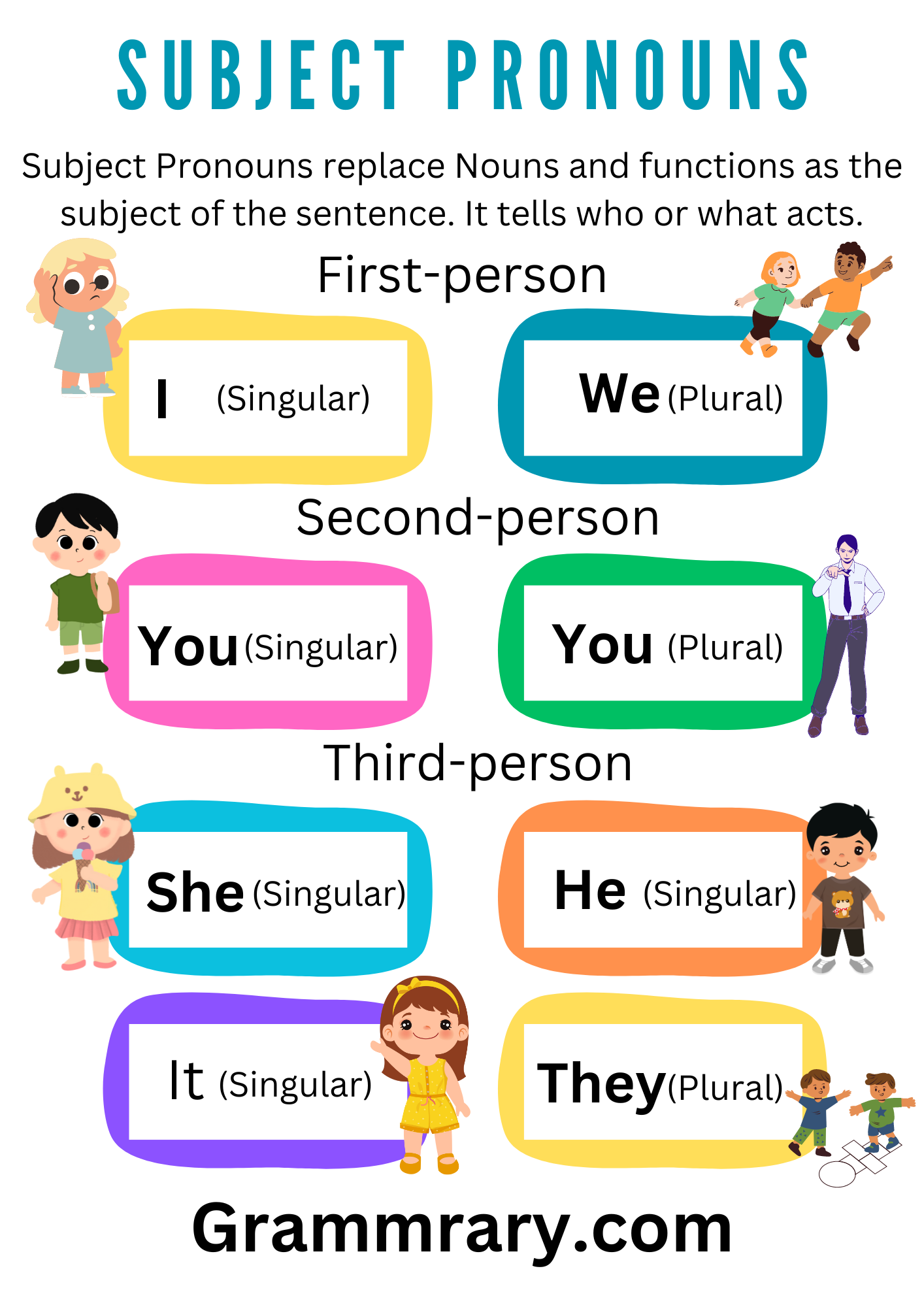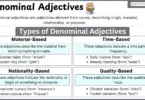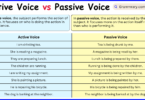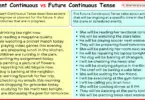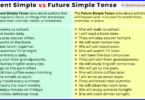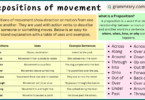Recalling the sentence structure, every sentence has a “subject.” The subject acts. Subject Pronouns replace Nouns as the subject of a sentence. So learning subject and object pronouns is crucial in learning grammar.
The subject pronoun or Subjective pronoun are type of pronoun replace noun and act as the subject of a sentence. These are the words that describe who is doing any action. It helps eliminate the repetition of nouns in sentences and makes the content attractive and engaging.
Subject Pronouns Definition:
They replace nouns by acting as the subject of a sentence
Subject pronoun examples:
Following are 7 subject Pronoun examples.
- He
- I
- She
- It
- You
- We
- They
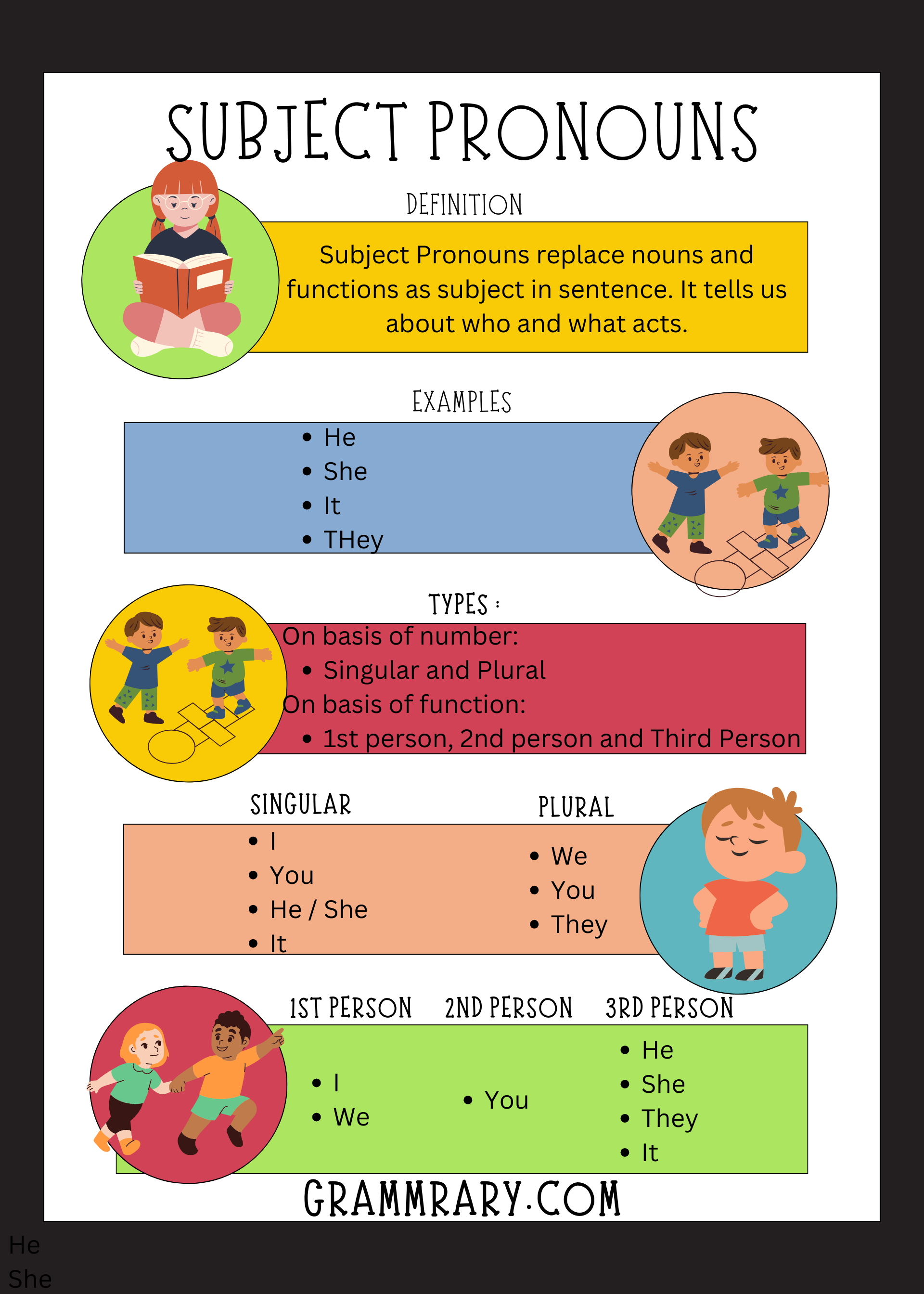
Subject Pronoun Definition, Examples, Usage, List and Exercise
20 Examples of Subject Pronouns in a sentence:
Following are the example sentences of subject pronouns.
- I provided them with all the content for preparation.
- You informed Evans that she got full marks; this made him the happiest.
- She gained weight by eating chocolates.
- They consumed water from the well.
- She is coming from Lahore.
- I am going to university.
- You have to complete your assignment.
- She is preparing for the test.
- He loves to bake.
- It is a hot day.
- We will go to college tomorrow.
- We all are going to the party.
- It is overflowing.
- They are coming from the hostel.
- I am tired today.
- She is feeling hungry.
- He is going to take a trip to the UK.
- They are going to the Maldives.
- She is earning 2K dollars a month.
- They are enjoying their work.
Types of Subject Pronouns:
Subject Pronoun can be classified into two types. These are:
- Singular Subject Pronouns
- Plural Subject Pronouns
Based on gender, there are three types:
- Masculine
- Feminine
- Gender-neutral

Subject Pronoun Definition, Examples, Usage, List and Exercise
Correct Use of Subject Pronoun:
Learn how to chose correct subject pronoun.
- The masculine and feminine subject pronoun refers to the male and female gender respectively.
- The gender-neutral subject pronoun is used when gender is unknown, or it is not required to describe the gender.
- “It” describes an unknown gender.
Singular represents one single person or thing while plural represents two or more persons or things. Here is a table for a better understanding.
| Singular | Plural | |
| Subject Pronoun | I, you, he, she, it | we, you, they |
Let’s classify for an even better understanding:
| Subject Pronoun | Singular / Plural – Person | Masculine or Feminine |
|---|---|---|
| I | Singular – first person | Gender-neutral |
| You | Singular – second person | Gender-neutral |
| He | Singular – third person | Masculine |
| She | Singular – third person | Feminine |
| It | Singular – third person | Inanimate object or animal |
| We | Plural – first person | Gender-neutral |
| You | Plural – second person | Gender-neutral |
| They | Plural – third person | Gender-neutral |
Let’s classify according to first-person/second-person/third-person.
| First-person | Second person | Third person | |
|---|---|---|---|
| Singular | I | You | He/She/It |
| Plural | We | You | They |
Subject Pronouns Worksheet:
Here is the Subject Pronouns Exercise.
Identify the Subject Pronoun.
- He picked up the ball.
- I think you appreciate working.
- It is raining outside.
- She enjoys attending parties.
- We are enjoying the weekend.
Here is the answer key.
- He
- I
- It
- She
- We

